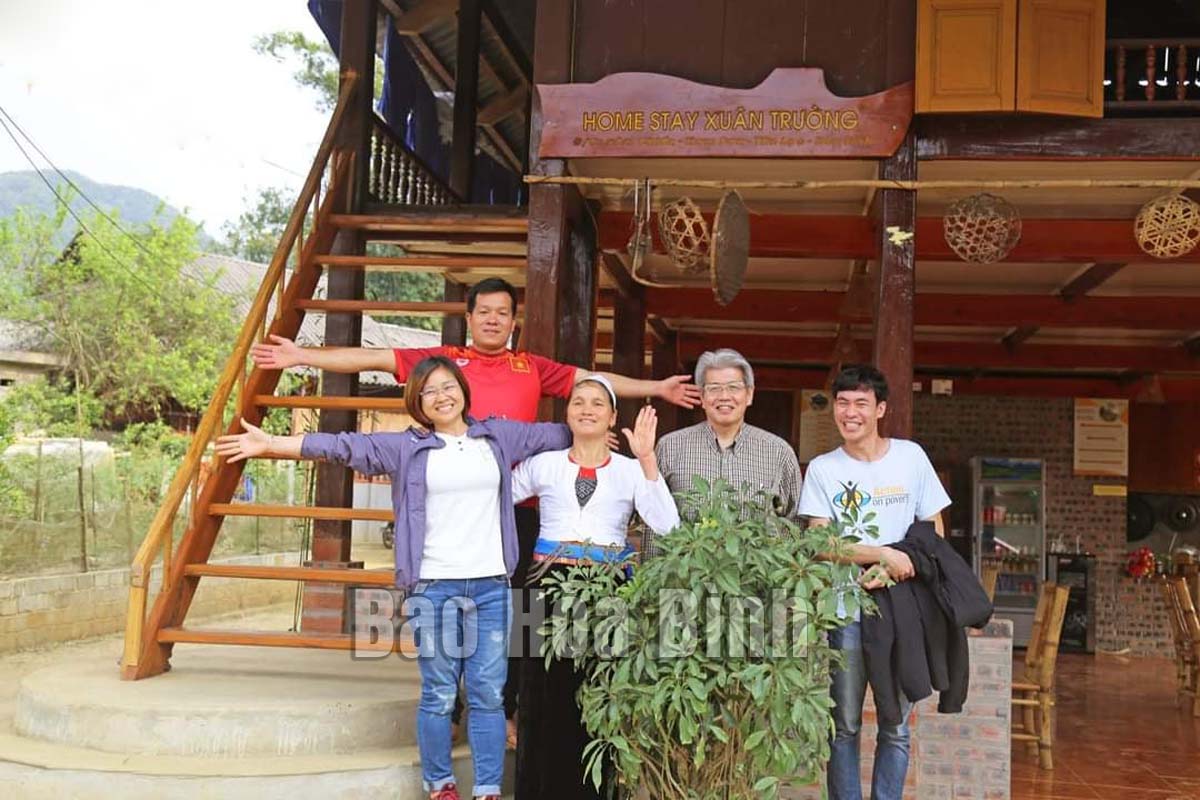(HBO) – As one of the four ancient Muong areas and the cradle of the Hoa Binh Culture, Tan Lac district has considered folk culture an important internal resource for development. In recent years, the Party Committee and administration of the district have rolled out measures to uphold the fine tradition and conserve the cultural identity for sustainable development.
destination for
tourists thanks to its fresh air and nature-friendly environment.
Luy Ai hamlet of Phong Phu commune is an ancient Muong village. Fine
traditional practices have been maintained in the daily activities of local
residents.
Apart from Luy Ai, the ancient Muong region in Tan Lac is also home to many
other destinations with strong cultural identity. Head of the Culture and Sport
Division of the district Dinh Son Tung said that the former Muong Bi-Tan Lac
region has kept many traditional values such as "Mo Muong” praying rituals,
Muong gongs, and "vi” singing, along with many traditional handicraft products
such as brocade weaving, bamboo woven products, wine and unique festivals.
The district has 11 famous landscapes and historical heritage sites at
provincial and national levels, said Tung, adding that the locality is
developing community-based tourism activities in a number of residential areas.
In order to tap the cultural resources for tourism development, over the years,
the district has mobilised resources for the restoration, conservation and
promotion of historical, spiritual relic sites and festivals, while strengthening
the education of revolutionary traditions among local residents and promoting
the image of the Muong Bi land and people to attract visitors and boost tourism
growth.
According to Tung, the district has restored and conserved traditional
festivals, staged performances of traditional songs and dances of Muong people,
and designed plans to protect and promote the values of Mo Muong, Muong gongs
in the locality.
At the same time, Tan Lac has also focused on developing traditional craft
villages, conserving traditional cultural values and ensuring the livelihood of
locals at the same time, thus producing more products serving tourism
activities. Traditional markets have been revived, becoming
a unique tourism product and helping preserve the traditional culture of Muong
people.
With its potential and advantages, Tan Lac district has been defined as the
centre of the Cao Phong-Tan Lac-Mai Chau tourism route.
In order to guide tourism activities, the district has paid special attention
to State management over tourism, while promoting tourism via the media,
training and developing human resources for the sector, and attracting
investment in tourism infrastructure system such as restaurants, hotels and
trade centres, Tung added.



